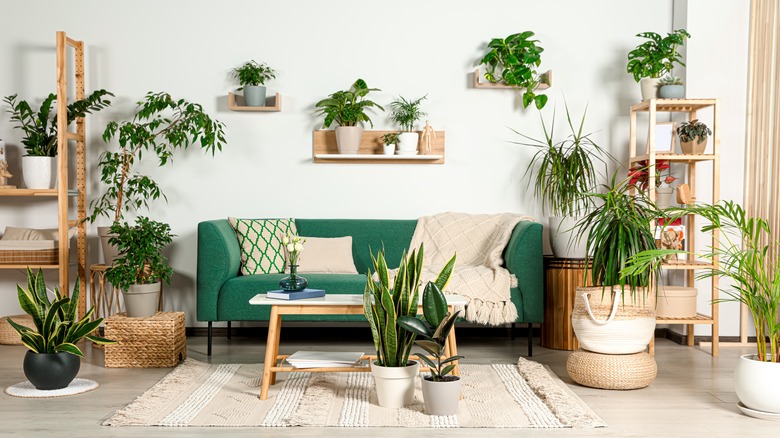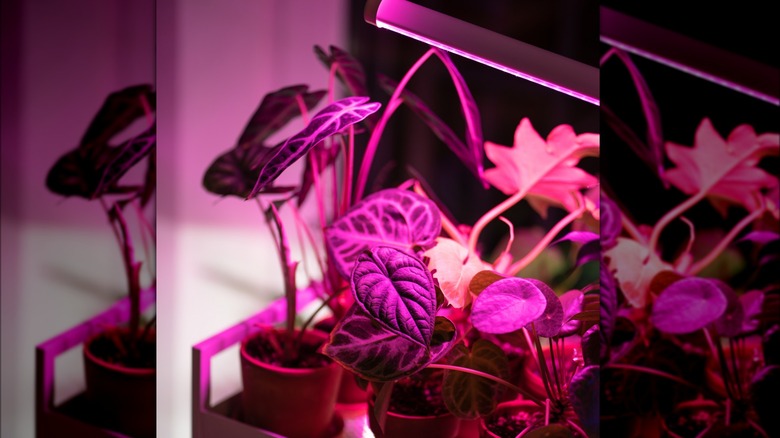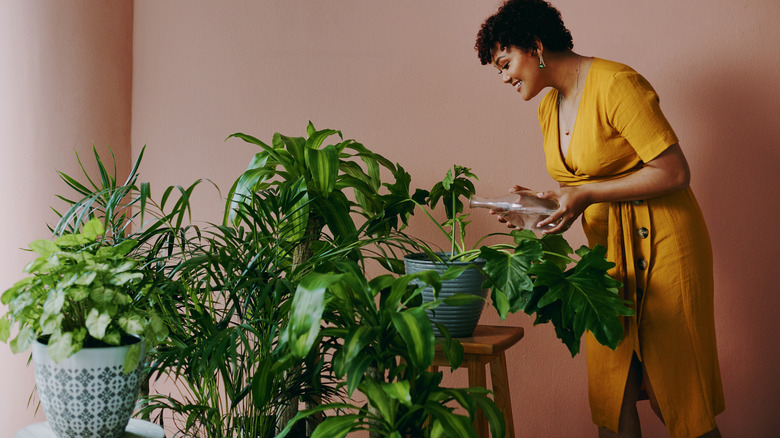Are There Really Houseplants You Can't Kill? Our Master Gardener Weighs In
It's nice to think that there are some magical houseplants at the garden center that you cannot kill, and there are certainly enough online articles that make this claim. After years of growing over 100 types of houseplants, we are here to tell you that you absolutely can kill any kind of houseplant –- unless it's plastic. Even those are susceptible to naughty dogs and cats.
We've grown and killed all the standard "indestructible" plants. Pothos? Yep. Snake plant. Oh yeah, overwatering rotted that one right at the soil line. And don't even get us started on the number of succulents we have killed both by over and underwatering. We're kind of proud of that –- it takes a special skill set to kill multiple plants by always getting the water amount wrong. We are embarrassed to say we have even killed ivy, the plant that aspires to take over the world. Just know, that if you have killed one of these "unkillable" plants, you aren't alone. Certainly, some plants are more tolerant of a range of environmental conditions than others, but there are two primary ways you are probably killing even the toughest houseplants.
Too little light
One of the biggest problems we have growing houseplants in our home is that we usually don't have a lot of natural light. In the summer, the mature trees help keep our house a little cooler, but they also block out the sun. In some rooms, even plants like pothos and spider plants struggle to stay alive, much less thrive. Our angel wing begonia suffers indoors through the winter until she can take her place in the warm summer shade.
Since not having a ridiculous number of houseplants is not an option, we have made some adjustments to our space. First, we installed large shelves to display our plants and added grow lights. While we have a few plants scattered, most are on the shelves so they can soak up the artificial sun. We also have a few pet-friendly plants placed near the lamps that we leave on all day. Some artificial light is better than nothing. You can even buy full-spectrum light bulbs that fit any standard lamp to give your plants even more of a boost.
Too much water
OK, raise your hand if you are guilty of overwatering. We are definitely in this club, as we mentioned earlier with the succulents and snake plants. When you have a lot of plants –- or even if you just have one or two –- it's hard to know when and how much to water. Add in variables like soil structure and types of planters, and you discover quickly how easy it is to kill even the most tolerant plant.
Houseplants simply do not tolerate soggy roots. Constantly wet soil leads to root rot — a condition that is almost impossible to recover from. If you have a planter with insufficient drainage, you might notice the soil on the surface is dry, but there could be a pool of water at the bottom. If you notice your plant leaves turning yellow and drooping, check the bottom of the planter for excess moisture. Instead of watering on a schedule, just water plants as needed. The general rule is to water any time the soil is dry 1 inch below the surface.
As for succulents, well, we've all but given up. We have a few placed carefully under grow lights in planters with excellent drainage that we talk nicely to every day in hopes they will stay alive.


